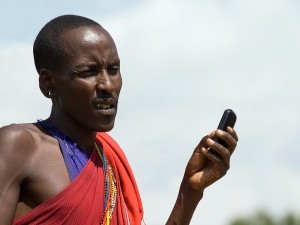Smartphone manufacturing is one of the most competitive consumer segments. In the last decade, innovation has upped levels of functionality and complexity in mobile devices and, with that, comes a hefty price.
 A number of smartphone manufacturers produce these devices for emerging markets, but do African-born companies have what it takes to compete with leading brands in terms of market share and available technology? And can this be done while also keeping costs down?
A number of smartphone manufacturers produce these devices for emerging markets, but do African-born companies have what it takes to compete with leading brands in terms of market share and available technology? And can this be done while also keeping costs down?
Recently Seemahale Telecoms and CZ Electronics entered into an agreement to manufacture smartphones and tablets in South Africa. As far as Seemahale CEO Thabo Lehlokoe is aware this will be a first in Africa. “It’s not right that out of a billion or more phones in Africa, none are made or assembled in Africa. Some are designed here, but they’re then made in China,” he said.
The 100% black-owned company will manufacture a 5-inch smartphone and a 10.1-inch tablet. While the printed circuit boards used in the production of the locally-made smartphone will be imported, everything else will be done locally, including the assembly of components such as chips and wiring, housing production and the printing of user manuals.
Africa is the second largest mobile phone market in the world, and according to the International Data Corporation (IDC), shipments of smartphones in Africa went up 21% in the second quarter of 2013, with smartphones now accounting for 18% of the overall mobile phone market.
With so many consumers ready to purchase smartphones or upgrade their current feature phones to newer models, the question of whether or not Africa is ready to satisfy the market is relevant. Put simply, why are there not more locally-manufactured smartphones on the continent?
It could be down to a number of factors, most importantly price and technology. Ensuring the latest technology in a device is a costly business and many companies simply do not have the capital to fund high-end devices.
The smartphone from Seemahale Telecoms and CZ Electronics is expected to make use of a 960×540-pixel LCD capacitive-touch screen, feature 4GB of storage, while running on a dual-core 1,5GHz processor powered by a 2 250mAh battery – hardly cutting-edge technology some may argue, but it does break down the price barrier.
Nigeria’s Phone and Allied Product Dealer Association (PAPDAN) also recently announced that they would soon be launching two new phones, made exclusively in the Country, which was a result of 20 Nigerian investors pooling resources together to develop mobile devices that cater to the local population.
While the company has yet to release specifications for their iQ and MaxTel devices, it is expected that the specifications will be similar to Seemahale’s device – at a cost of around $100.
However it is not only individuals, innovators or entrepreneurs who want to bring cheaper smartphones to the Africa market. International company Intel released the Yolo smartphone with Kenya mobile operator Safaricom earlier this year and it has some rather impressive specifications.
It makes use of an Intel Atom processor Z2420 with Intel Hyper-Threading Technology, has the ability to capture full HD video or capture up to seven pictures per second—in 5-megapixel quality and has a built-in FM radio with a 3.5-inch touch screen display.
 Chinese manufacturer Huawei launched the Ideos X1 smartphone into the Kenyan market a number of years ago, one of the first mainstream devices to break through the psychological price barrier of $100.
Chinese manufacturer Huawei launched the Ideos X1 smartphone into the Kenyan market a number of years ago, one of the first mainstream devices to break through the psychological price barrier of $100.
Samsung, who currently has 52% market share in Africa, launched the Galaxy Pocket in several markets and consumers will be getting the familiar Samsung experience in a stripped-down version of the popular Galaxy family of smartphones – and retails for around $118.
Moving into a slightly higher cost bracket, Microsoft partnered with Huawei in the beginning of the year to produce the Huawei Windows Phone, as part of Microsoft’s 4Afrika initiative. The Huawei 4Afrika Windows Phone will retail for approximately $150 and will initially be sold in seven countries.
With at least four international manufacturers actively developing and releasing smartphone for Africa, is it such a good idea for local companies to try to compete with the bigger players? Large companies have an established distribution footprint, have the capital and technology for Research and Development and have the ability to enter new markets very quickly.
But there is one thing that brands such as Samsung, Huawei and Microsoft have over independent smartphone manufacturers which could seriously scupper their plans – that is customer brand loyalty.
“Africans are generally quite conscious of brand, quality and image. We are being very clear that we are not going to be building something cheap for this market. What we want to do is deliver real quality innovation at an affordable price. Compared to some smartphones that cost $600 here, this is very affordable,” said Fernando de Sousa, the general manager for Microsoft Africa.
Independent investor, innovators and local manufacturers might have the best intentions when aiming to develop a smartphone (or even a tablet) for the African continent, but as long as major players are already investing heavily in Africa, they will have an uphill battle to find traction in a very crowded and highly-competitive market.
“The African smartphone space is wide open for whichever device manufacturer best executes its affordable smartphone strategy. Only time will tell, but the battle is sure to be fierce and likely profitable,” wrote The Next Web.















